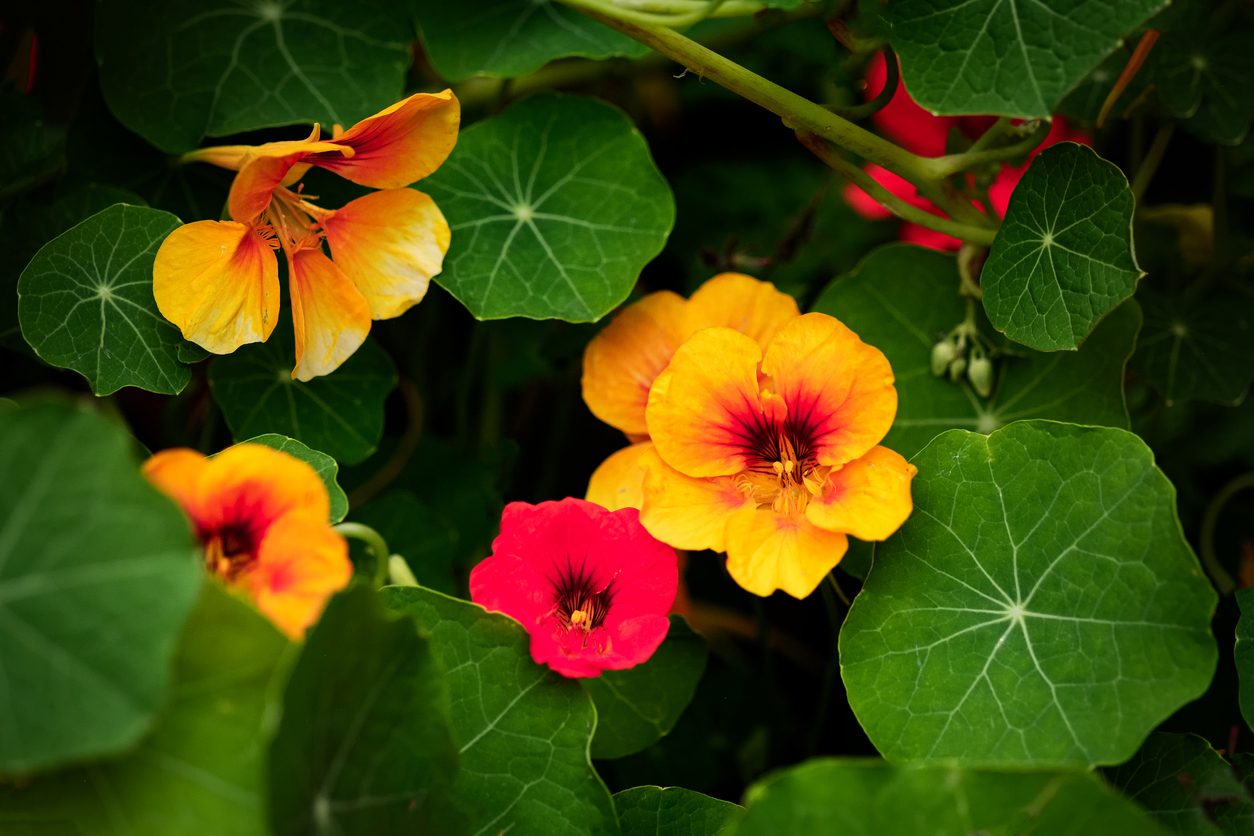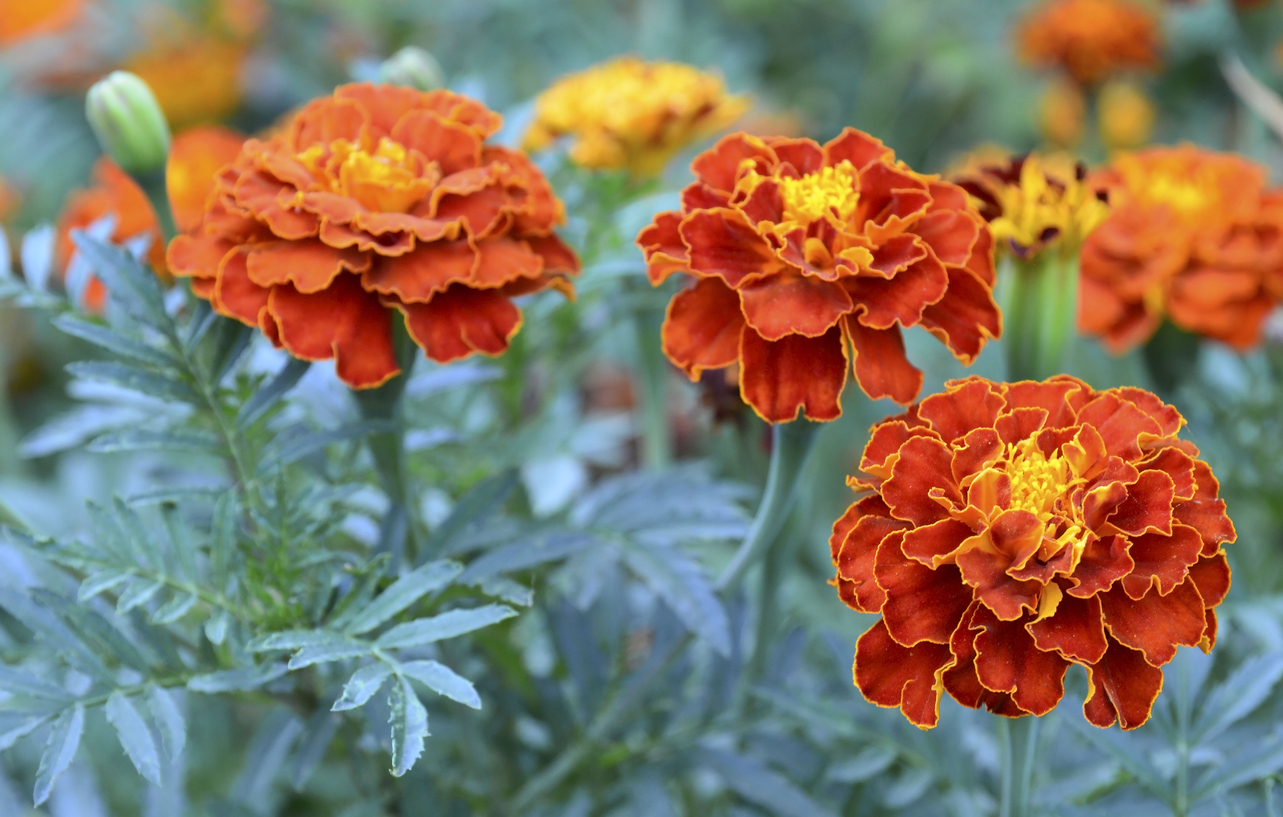

We may earn revenue from the products available on this page and participate in affiliate programs. Learn More ›
Decoy plants are plants used to keep pests away from prized vegetables by luring hungry insects to their own leaves and stems. Gardeners still might have to control the pests on decoy plants—whether by hand-picking, insecticidal soaps, or disposal of infested plants—but at least no vegetables will be harmed in the process!
Perhaps the term “trap plants” is a better description than “decoys” for these sacrificial companion plants. Trap plants also have other uses—many are edible themselves and attract beneficial insects, as well as the “bad” ones. This means planting them won’t be a waste of time even if it turns out that you don’t need them for pest control.
Best of all, decoy plants are a more sustainable gardening method when it comes to preventing pests from destroying your edibles than any sprays or chemicals. In most cases, you should sow or set out decoys at least a couple weeks before you sow or set out the vegetables you want them to preserve. To stay on the safe side, it’s usually best to keep the crops you plan to protect at least 8 to 12 feet away from decoy plants like the ones listed below.
RELATED: 10 Plants That Grow Better with Companions
1. Dill (Anethum graveolens)

Sometimes reaching 4 feet tall at maturity with feathery foliage and umbels of yellow flowers, dill draws tomato hornworms. Those large, green, and yuck-producing creepy-crawlies infest tomatoes and other crops belonging to the nightshade family.
Keep in mind, though, that tomato hornworms also turn into pretty impressive moths. Dill additionally a host plant for swallowtail butterflies, whose caterpillars are prettier than hornworms, with white, yellow, and black circles. Meanwhile, you can use whatever dill survives the swallowtails and green monsters for cooking and pickling homegrown cucumbers.
2. Collards (Brassica oleracea var. viridis)

The similarly green, but smaller, cabbage worm likes all members of the Brassicaceae family. You can take advantage of the cabbage worm’s lack of pickiness by luring it away from your cabbages by first sowing collards.
A plainer cousin of kale with less curly leaves, collards grow 2 to 3 feet tall and are hardy enough to be planted outdoors up to a month before your last frost date, ensuring that the early collard gets the worm! You can also cook up collards that survive as greens; they are said to be especially good with salted meats like ham.
3. Chervil (Anthriscus cerefolium)

Among other wormlike pests, the slugs that chow down indiscriminately on so many of the plants in your vegetable garden reportedly prefer chervil if they can get it. Therefore, growing this herb along your garden’s border might help keep slugs occupied with the outer fringes of your plot.
Like dill, chervil is ferny with umbels of tiny blooms. However, it seldom tops 2 feet in height and lacks the pickle scent. Instead, it smells and tastes like a cross between anise and parsley, so you can use it as a seasoning for salads as well as for slug bait!
4. Kale (Brassica oleracea var. sabellica)

Kale grows to about the same height as collards and—like them—prefers cool weather. Though kale often gets buggy during the hot months, that may actually be a good thing, since it reportedly can lure whiteflies away from other members of the cabbage and nightshade families. Being a tough plant, it may still recover and provide you with plenty of healthy edible greens come autumn.
5. Radish (Raphanus sativus)

Varying in height from 6 to 18 inches according to cultivar, radishes also are a cold-weather crop. And, even if you don’t like their pungent flavor, you might want to plant some a couple weeks earlier than the rest of your garden. The fast-growing, low-maintenance vegetables can then attract flea beetles to their foliage and possibly spare the brassicas or nightshade family plants that those bugs also favor.
RELATED: 15 Natural Pest-Control Strategies for Your Yard and Garden
6. Blue Hubbard Squash (Cucurbita maxima ‘Blue Hubbard’)

This figurative mother of all winter squashes produces fruits that can weigh up to 20 pounds. The heirloom ‘Blue Hubbard’, with its blue-gray rind and orange flesh, has long been recommended as the best trap crop for cucumber beetles, which cause disease and death in cucumber, melon, and other squash vines. Should your “Mother” Hubbard survive its bout with the beetles, it will also provide you with stupendous squashes.
7. Common Evening Primrose (Oenothera biennis)

Speaking of beetles, one native flowering “weed” can help weed out Japanese beetles. Although most gardeners yank wild evening primrose seedlings, it’s a good idea to allow some to remain at the edges of the garden since the biennial plants can grow to 5 feet in the right conditions.
Not only do they produce lovely yellow night-blooming flowers, but they also lure Japanese beetles away from other plants. Those beetle brains may know something we don’t, as all parts of evening primrose plants—including the seeds—are edible and probably more nutritious than many vegetables in the patches from which they’re normally pulled.
8. Nasturtium (Tropaeolum majus)

Another bright and bitable bloomer that seldom surpasses 18 inches in height, nasturtium can attract all kinds of aphids away from your squashes, cabbage, and beans. Since pesky aphids tend to congregate at the tips of plants, you simply can keep pinching the nasturtiums back to rid them of their “plant lice.” Of course, those annuals also provide attractive flowers, not to mention edible leaves for salads and seed pods that can be pickled like capers.
9. French Marigold (Tagetes patula)

Similarly topping out at a demure height of 18 inches, the French marigold and its sunny-hued blooms will have thrips tripping over themselves to abandon tomatoes or other perennial vegetable plants in favor of Tagetes. It even has been used as a trap plant in greenhouses or as a pest deterrent based on its scent. And, of course, if they survive the thrips, the plants also will provide a beautiful border for your vegetable garden.
10. Okra (Abelmoschus esculentus)

Grown for its edible seed pods often fried or added to gumbos and soups, okra plants can grow up to 6 feet tall and flaunt hibiscus-like red-centered yellow blooms, too. Even if you don’t like okra’s texture, it’s worth growing this plant for its flowers and ability to attract stink bugs away from other vegetables alone. Those shield-shaped insects like to suck the moisture from okra’s pods and may choose it over other crops.
RELATED: 12 Climbing Vegetables That Are Perfect for Compact Gardens
11. Sunflower (Helianthus annuus)

If the leaf-footed bug is your garden problem, sunflowers might be the solution, since this insect apparently enjoys walking all over the flowers’ big heads. Because some sunflowers can surpass 10 feet in height, though, you’ll either need to place them at the back of the garden or opt for dwarf types to avoid shading your vegetables.
